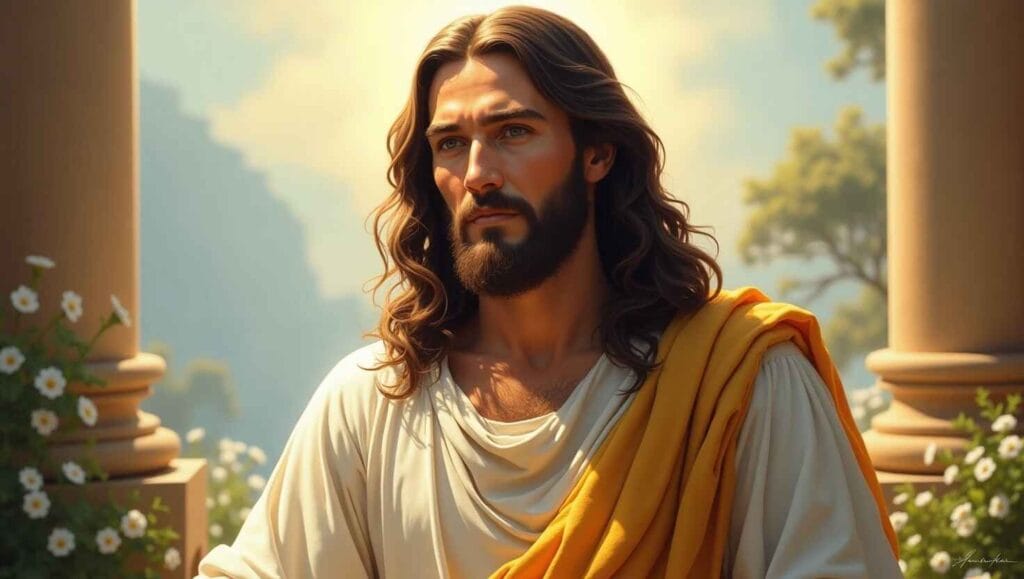
1st Century Judea
Introduction
To understand the significance of Jesus of Nazareth and the early development of Christianity, one must first understand the historical context in which He lived. 1st Century Judea was a land filled with political tension, cultural diversity, religious fervor, and messianic expectations. Located at the crossroads of empires, Judea was not just a Roman province—it was a cultural melting pot and a deeply spiritual land undergoing major transformation.
In this article, we’ll explore the geography, political rule, religious landscape, daily life, and the socio-economic realities of 1st Century Judea, shedding light on how these elements influenced both the life of Jesus and the explosive rise of the early Christian movement.
1. Geographic and Cultural Overview
Judea, part of the larger region of ancient Palestine, lay on the eastern edge of the Roman Empire, bounded by the Mediterranean Sea to the west and desert regions to the east. It was a land of hills, valleys, and fertile plains, home to a mix of rural villages, bustling trade towns, and religious centers.
Culturally, 1st Century Judea was diverse. While most of the population was Jewish, there were significant populations of Greeks, Romans, Samaritans, and other ethnic groups. This mixture created tensions and occasional cooperation among various communities. Greek was widely spoken, especially in urban centers, but Hebrew and Aramaic were dominant among Jewish families.
2. Roman Occupation and Political Rule
By the 1st century AD, Judea was under Roman control. After the death of Herod the Great in 4 BCE, Rome divided his kingdom among his sons. Eventually, Judea became a Roman province governed by a prefect or procurator appointed by the emperor. One of the most infamous of these governors was Pontius Pilate, who ruled from 26–36 AD.
Rome’s rule was harsh, marked by:
Heavy taxation
Military presence
Religious interference
Suppression of dissent
While some elites, like the Herodian dynasty and certain high priests, benefited from Roman rule, most Jews resented it. This discontent fueled zealot movements and messianic hopes of liberation, laying the groundwork for numerous revolts—including the Jewish War of 66–70 AD, which ended in the destruction of the Second Temple.
3. Religious Life and Jewish Sects
Religion was central to Jewish identity in Judea. At the heart of Jewish religious life stood the Second Temple in Jerusalem, the only place where sacrifices were offered. The Temple was more than a place of worship—it was a symbol of God’s covenant with Israel and a center of national pride.
There were several religious groups with differing views on how to interpret the Law and how to deal with Rome:
Pharisees: Emphasized the oral law and personal piety; respected by many common people.
Sadducees: Temple elites who rejected oral traditions; collaborated with Rome.
Essenes: Separatists who lived in desert communities, possibly responsible for the Dead Sea Scrolls.
Zealots: Revolutionaries who sought to overthrow Roman rule by force.
Samaritans: Ethnically related to Jews but with their own version of the Pentateuch and Mount Gerizim as their holy place.
Jesus’ teachings often challenged these sects—especially the Pharisees and Sadducees—not necessarily because He rejected Judaism, but because He called people back to the heart of the Law: love, mercy, and justice.
4. Messianic Expectations
One of the defining religious themes of 1st Century Judea was the hope for a Messiah—a God-anointed leader who would restore Israel’s glory and liberate it from foreign oppression. These expectations varied:
Some envisioned a kingly figure, like David.
Others hoped for a priestly redeemer.
Still others imagined a prophet-like Moses.
When Jesus entered the scene preaching the Kingdom of God, many wondered: Was He the Messiah? His message of peace, healing, and forgiveness confused some, angered others, and ultimately led to His crucifixion—partly due to Rome’s fear of rebellion and the Jewish elite’s concern over His growing influence.
5. Daily Life in 1st Century Judea
Economy and Occupations
Most people lived in rural areas and worked in agriculture, raising livestock or cultivating crops like olives, grapes, and wheat. Fishermen were also common, especially near the Sea of Galilee—where Jesus called some of His first disciples.
There were also:
Craftsmen (carpenters, weavers, potters)
Merchants and traders
Tax collectors (often despised)
Day laborers and slaves
Economic disparity was wide. Wealthy landowners often exploited the poor, and Roman taxes made survival difficult for the average Jewish family.
Family and Social Structure
The family was patriarchal, and marriages were often arranged. Jewish life revolved around:
Synagogues (local centers of worship and learning)
Festivals like Passover and Sukkot
Ritual purity and Sabbath observance
Despite a male-dominated culture, women like Mary Magdalene, Martha, and Mary the mother of Jesus played significant roles in Jesus’ ministry, showing a shift toward greater inclusion.
6. Language and Education
The common languages of the region were:
Aramaic: Spoken by most Jews and likely Jesus Himself.
Hebrew: Used in religious settings.
Greek: Used in commerce and public life.
Latin: Spoken by Roman officials.
Jewish boys learned to read the Torah, often in local synagogues. Education was seen as a sacred duty, and rabbis (teachers) were respected members of the community. Jesus Himself was frequently called “Rabbi”, showing that He was recognized as a teacher, even by those outside His inner circle.
7. Conflict, Revolt, and the Temple’s Fall
The tension between Jewish hope and Roman oppression eventually exploded in the First Jewish Revolt (66–70 AD). It ended with:
The siege of Jerusalem
The destruction of the Second Temple in 70 AD by Titus, future emperor of Rome
The near-collapse of Jewish temple-based worship
This event was catastrophic and reshaped Judaism forever, shifting focus from Temple sacrifice to Torah study and synagogue worship. It also pushed the fledgling Christian movement into a clearer identity, separate from Judaism.
8. Jesus in 1st Century Judea
In this volatile context, Jesus’ ministry emerged as both a continuation of Jewish prophetic tradition and a radical reorientation of spiritual life.
He:
Preached the Kingdom of God
Healed the sick and outcast
Challenged legalism and hypocrisy
Offered forgiveness and grace
Was eventually crucified by Rome as a political threat
Understanding 1st Century Judea is crucial to understanding why Jesus’ message was so dangerous, yet so transformative. It explains the social, political, and religious forces that led to His execution—and how those same forces helped catalyze a global movement in His name.
9. Legacy and Lasting Influence
The impact of 1st Century Judea did not end with the destruction of the Temple. Its history lives on in:
Jewish Rabbinic traditions
Christian liturgy and theology
Modern archaeological discoveries
Cultural memory through Scripture
Today, countless pilgrims visit the Holy Land to walk where Jesus walked and better understand the ancient world that shaped His life and teachings.
Conclusion
1st Century Judea was a land full of contradictions: conquered but proud, religious but fractured, peaceful in appearance but boiling with tension underneath. It was a world ready for change—a world in need of hope. Into this world came Jesus of Nazareth, whose message would outlive empires and change history forever.
By understanding the culture, politics, and people of 1st Century Judea, we gain deeper insight not only into the life of Jesus but into the resilience and transformation of the Jewish and early Christian communities that endured and evolved after Him.
Understanding the social and political environment of 1st Century Judea is essential to grasping the depth of Jesus’ teachings and His impact. This period—marked by Roman occupation, religious tension, and messianic expectation—set the stage for a message that would eventually change the world. If you’re looking for more reflections that bring historical truth into today’s faith journey, visit our Jesus for Everyone section for devotionals and insights. For deeper historical context, the Jewish Virtual Library offers excellent academic resources. Feel free to link back to this article if you’re writing about Jesus’ historical setting, Jewish traditions, or early Christianity.
To truly understand the teachings of Jesus, it’s essential to explore the world of 1st Century Judea—a time marked by Roman rule, religious diversity, and messianic hope. This historical backdrop adds depth and clarity to the Gospel message. For more Christ-centered reflections and biblical insights, explore our devotionals at Jesus for Everyone. You can also learn more about the history of Judea from trusted academic sources like the Biblical Archaeology Society. If you’re writing or teaching on early Christianity or the life of Jesus, feel free to link back to this article to enrich your readers’ understanding.
Where History and Faith Converge
1st Century Judea was a land of deep contrasts—politically turbulent, spiritually alive, and culturally complex. It was within this landscape that Jesus of Nazareth lived, taught, and forever altered the course of human history. Understanding the social, political, and religious climate of 1st Century Judea helps us better grasp the message of the Gospels and the explosive birth of Christianity.
Ruled by the Roman Empire, 1st Century Judea was under the authority of governors like Pontius Pilate and puppet kings such as Herod Antipas. The Roman occupation brought military presence, heavy taxation, and cultural tension. Many in 1st Century Judea resented Roman control and longed for liberation. This tension fed religious fervor and messianic hope, laying the groundwork for Jesus’ radical teachings.
Religion was central to everyday life in 1st Century Judea. The Temple in Jerusalem stood as the spiritual heart of the Jewish people. It was not only a place of worship but also a symbol of national identity. In addition to temple worship, local synagogues throughout 1st Century Judea played a vital role in community life. People gathered to hear the Torah, pray, and discuss the law.
Several Jewish groups shaped religious thought in 1st Century Judea. The Pharisees emphasized purity and oral traditions. The Sadducees controlled temple worship and aligned with Rome. The Essenes withdrew from society to await divine intervention, while the Zealots called for violent resistance. Each group offered a different vision for Jewish faith and survival in 1st Century Judea.
Amid this diversity, Jesus brought a message of the Kingdom of God—calling for repentance, compassion, and justice. His teachings resonated with the poor and marginalized, many of whom struggled under the economic burdens of 1st Century Judea. Farmers, fishermen, and tradespeople made up most of the population, living humble lives shaped by faith and survival.
The linguistic and cultural landscape of 1st Century Judea was equally rich. While Aramaic was the common spoken language, Hebrew remained the language of scripture, and Greek was widely used in commerce and governance. This blend of languages reflected the multicultural reality of 1st Century Judea, influenced by centuries of conquest and trade.
Jesus’ crucifixion at the hands of the Roman authorities and His growing following among the people of 1st Century Judea underscore the volatile intersection of politics and faith. After His resurrection, the early Christian movement continued to grow, shaped by the tensions and traditions of the region.
In conclusion, 1st Century Judea was more than just a setting—it was a crucible of transformation. The religious expectations, political unrest, and cultural diversity of 1st Century Judea set the stage for a new spiritual movement that would spread across the world.
